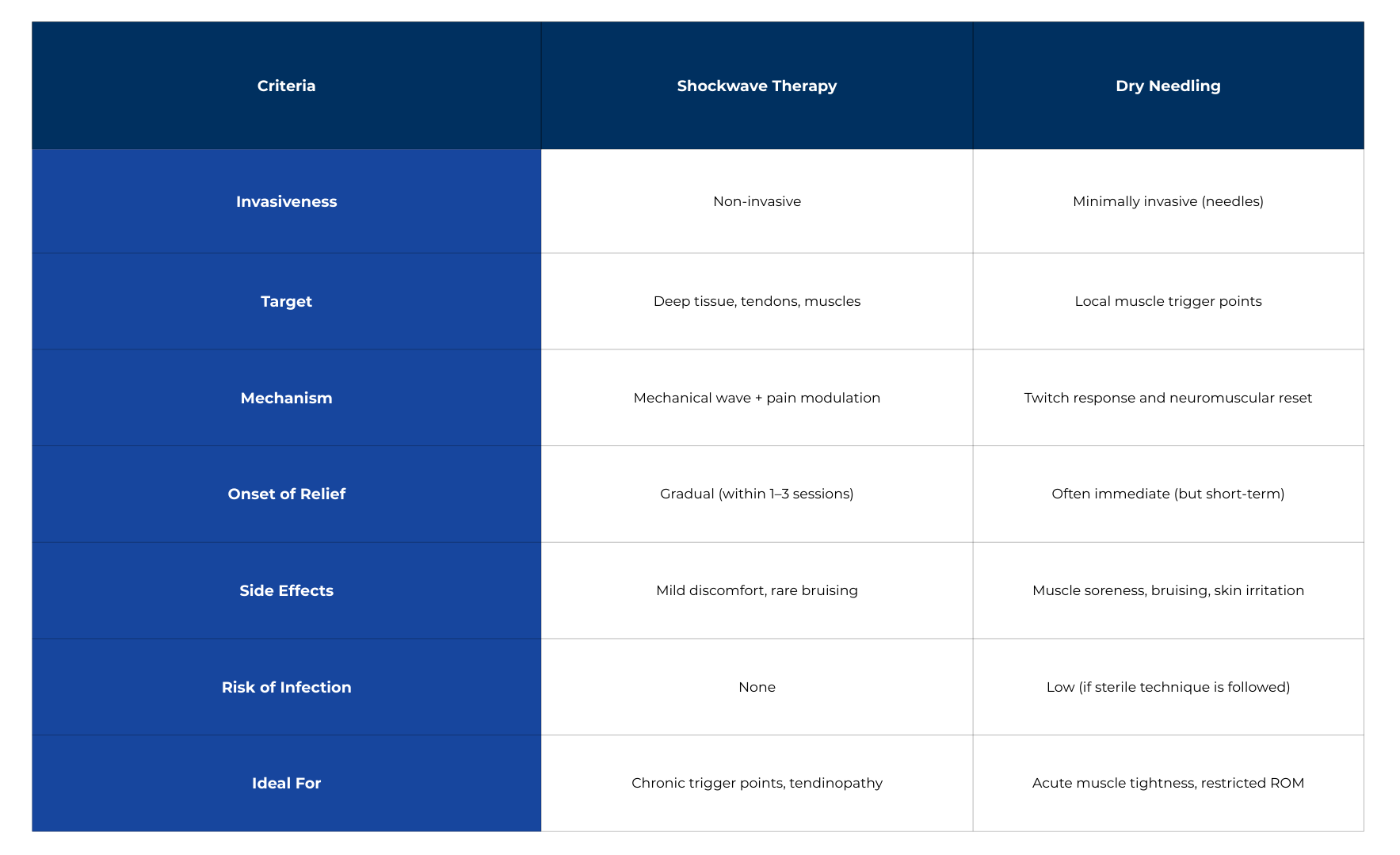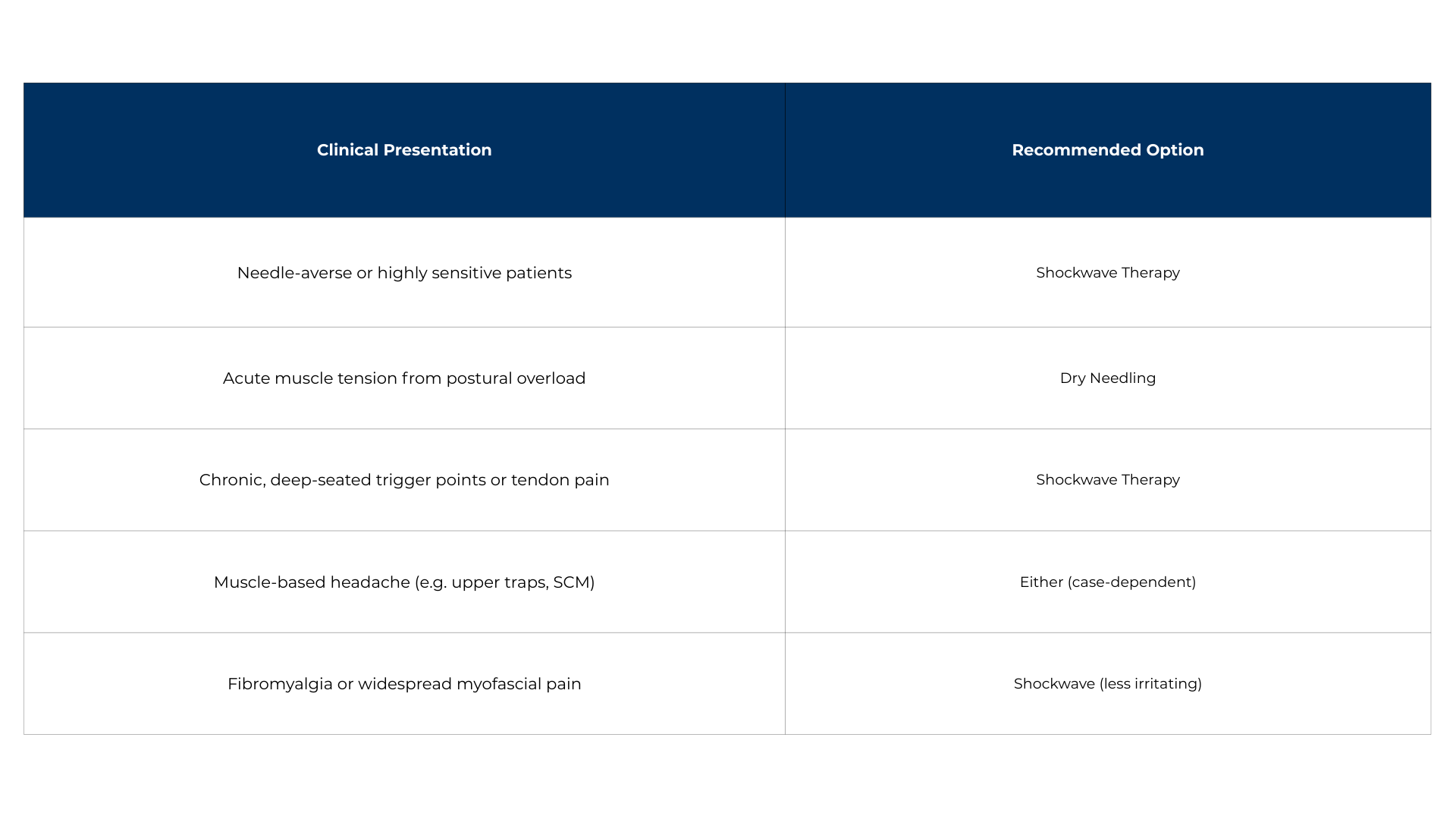Shockwave Therapy vs Dry Needling: Which Is Better for Muscle Pain and Trigger Points?
Introduction
Muscle tightness, myofascial trigger points, and chronic tension are common complaints among both athletes and desk-based professionals. Two popular treatment options — dry needling and shockwave therapy — can address these issues, but they work in very different ways.
At Tensegrity Sports Clinics, we use both techniques depending on the condition, pain chronicity, and patient preference. Here’s how they compare.
What Is Dry Needling?
Dry needling involves inserting fine, sterile acupuncture-style needles directly into muscle trigger points (taut, painful bands of muscle). It aims to:
- Release muscle contraction
- Decrease referred pain
- Improve range of motion
Dry needling works by disrupting neuromuscular activity and stimulating a local twitch response — but it can cause soreness or bruising post-treatment.
What Is Shockwave Therapy?
Shockwave therapy (specifically radial shockwave) uses mechanical pressure waves to stimulate healing in deep soft tissues. In the context of muscular pain, it:
- Desensitises trigger points
- Increases blood flow
- Reduces local inflammation
- Interrupts pain signal pathways
It’s non-invasive and well tolerated, especially for those wary of needles.
What the Research Says
Trigger Point Myofascial Pain
Study: Han et al. (2017)
Title: “Comparison of radial shock wave therapy and dry needling in the treatment of myofascial trigger points in the upper trapezius”
Published in: Journal of Physical Therapy Science
Key Findings:
- Both therapies were effective in reducing pain and increasing range of motion.
- Shockwave therapy showed greater pain reduction at 4 weeks.
- Patients reported less post-treatment soreness with shockwave.
Patient Satisfaction & Tolerance
Study: Mense et al. (2020)
- Shock wave therapy was preferred by patients due to less discomfort, especially in those with needle anxiety or fibromyalgia.
- Dry needling can induce temporary soreness, which may affect compliance in sensitive patients.
Comparison Table: Shockwave Therapy vs Dry Needling

When to Use Each Treatment

Conclusion
Both dry needling and shockwave therapy are powerful tools for reducing muscular pain and dysfunction. Dry needling offers fast relief for acute tightness, while shockwave therapy provides a broader and longer-lasting effect, particularly in chronic or stubborn cases.
If you’re unsure which approach is right for you, our chiropractors in Sydney at Tensegrity Sports Clinics will guide you through a personalised assessment and treatment plan.
